Seongnamsa Temple (석남사 울산)
7.1 Km 19404 2020-03-17
557, Seongnam-ro, Ulju-gun, Ulsan
+82-52-264-8900
The name of the temple is believed to have originated from the fact that it is located south of Gajisan Mountain or Seokansan Mountain. Built in 824 A.D. (during the 16th year of King Heondeok’s reign), the temple was destroyed during the Japanese Invasions of Korea (1592-1598) and rebuilt in 1674 (during the 15th year of King Hyeongjong’s reign). Since then, it has gone through rebuilding several times. Consisting of 30 buildings, the temple is home to many Buddhist nuns.
Seongnamsa Three Story Pagoda (Local Tangible Cultural Property No. 5) was built in 824 A.D. by Monk Doui, reflecting his wish of protecting the country from foreign invasions. The pagoda was initially placed in front of Daeungjeon, but moved to the current location in 1973. Other notable relics in the temple include the Statue of Monk Doui (National Treasure No. 369), Three Story Sarira Pagoda, and Stone Water Tank (Cultural Property Material No. 4).
Tongdo Fantasia (통도환타지아)
7.2 Km 28424 2022-09-26
68, Tongdo 7-gil, Yangsan-si, Gyeongsangnam-do
+82-55-379-7000
Tongdo Fantasia is located in Yangsan, Gyeongsangnam-do, which shares borders with Milyang, Ulsan and Busan. This makes the amusement park very accessible by any means of transportation. Tongdo Fantasia operates Tongdo Country Club as well, and nearby Tongdosa Temple is also available for visitors who want to look around the local historic sites. The amusement park, the biggest theme park in Gyeongsangnam-do sits at the foot of Yeongchwisan Mountain, has over 30 amusement facilities, a large-scale swimming pool, a natural lake, a plaza for various events and a large-scale outdoor theatre, all offering various activities and events.
Gajisan Provincial Park (Miryang Section) (가지산도립공원(밀양))
7.2 Km 11782 2021-05-31
Sannae-myeon, Miryang-si, Gyeongsangnam-do
+82-55-359-5357
Situated 1,240 meters above sea level, Gajisan Mountain is famous for its beautiful stones and rocky peaks. There are a variety of things to see on the mountain besides the beautiful stones. In fall, the pampas grass provides a spectacular sight as the whole mountain peak is covered in autumn colors. The mountain attracts many hikers wanting to see oddly-shaped rocks like the famous Ssalbawi Rock.
Gyeonggi Sikdang (경기식당)
7.7 Km 23502 2024-02-23
86 Sinpyeonggangbyeon-ro, Habuk-myeon, Yangsan-si, Gyeongsangnam-do
Gyeonggi Sikdang is nestled near the Tongdosa Temple, one of Korea's three major temples. It is celebrated for its expertise in Korean cuisine. The restaurant's signature dish is sanchae bibimbap (wild vegetable bibimbap), a vibrant mix of at least five types of namul (salad) harmoniously blended with their homemade gochujang (red chili paste). Each order is thoughtfully paired with an array of side dishes and a complementary soup. In addition to this signature dish, Gyeonggi Sikdang's menu boasts a diverse selection of Korean specialties, such as deodeok gui (grilled deodeok), dotorimuk (acorn jelly salad), pajeon (green onion pancake), and baeksuk (whole chicken soup).
Tongdosa Temple [UNESCO World Heritage] (통도사[유네스코세계문화유산])
7.9 Km 59197 2024-02-08
108 Tongdosa-ro, Habuk-myeon, Yangsan-si, Gyeongsangnam-do
Tongdosa Temple, esteemed for its establishment in 643, is a revered site recognized as a UNESCO World Heritage. This temple proudly houses Buddha's genuine sacred relics. It also boasts an array of significant Buddhist cultural treasures, such as the Daeungjeon Hall, the Gilt-Bronze Vairocana Buddha, and the Buddhist Museum. Additionally, the temple offers a templestay program for visitors.
Miryang Pyochungsa Temple (표충사 (밀양))
9.1 Km 10512 2022-09-16
1338, Pyochung-ro, Miryang-si, Gyeongsangnam-do
+82-55-352-1150
Pyochungsa Temple is located at the base of Jaeyaksan Mountain, 20 kilometers east of Miryang. The temple was originally founded by Monk Wonhyo in the 1st year of King Muyeol in Silla period under the name Junnimgsa Temple, then expanded and renamed by a monk from India in the fourth year of King Heungdeok’s reign of the Silla period. Nearby attractions include Cheungcheungpokpo Falls, Geumgangpokpo Falls, and Eoreumgol Ice Valley, as well as Sajapyeong Plain at the ridge of the mountain.
Unmunsan County Park (운문산군립공원)
9.2 Km 22506 2022-09-06
Unmun-myeon, Cheongdo-gun, Gyeongsangbuk-do
+82-54-370-6114
Unmunsan Mountain (1,118 meters) is one of the seven mountains rising over 1,000 meters above sea level in the Yeongnam Alps in the Taebaeksanmaek Mountain Range. Unmunsan Mountain features dense groves, attracting a large number of hikers. From the summit, one can get a great view of the golden reeds on Cheonhwangsan Mountain to the south, and the ridges of Gajisan Mountain to the east.
There are various sized temples and hermitages on the mountain, nestled among a splendid landscape. Unmunsa Temple is situated at the foot of the mountain on the northern side. It was built by Sinseung in the 18th year of the reign of King Jinheung (557) of the Silla Kingdom. Though some buildings burned down during the Imjin War, the Obaengnahanjeon Hall and Gwaneumjeon Hall have been preserved in their original state. The dense groves of pine trees and fir trees add to the tranquility of the beautiful scenery. In the temple, seven treasures are kept, including the Stone Lantern at Geumdang Hall (Treasure). The historic relics date back to the Silla kingdom and Goryeo dynasty.
Jaeyaksan Mountain (재약산)
9.5 Km 16590 2021-05-25
Gucheon-ri, Miryang-si, Gyeongsangnam-do
+82-55-352-1150
Situated between Miryang and Ulju, Jaeyaksan Mountain (1,119.1 meters) boasts gorgeous landscapes with giant rock formations near its peak. One of the most popular attractions of the mountain is Sajapyeong Plain and its vast field of silvergrass. The hiking course is relatively easy, adding to its charm. Nearby attractions include Eoreumgol Valley, Hobakso Pool, Pyochungsa Temple, Cheungcheungpokpo Falls, and Geumgangpokpo Falls.
Vanastha (Healing in Ulju) (와나스타(울주에서 치유하다))
10.0 Km 0 2024-01-10
207 Daeam 1-gil, Eonyang-eup, Ulju-gun, Ulsan
Vanastha, located in the forest inside Daeam Dam in Ulju-gun, is a forest yoga house that means "stay in the forest." For modern people who lack time to look back on their bodies in their tired daily lives, it provides time to fully focus on themselves with proper breathing, meditation, and Hatha yoga. Here, one can hear the sounds of nature, feel nature, and experience of becoming one with nature and the universe, only in nature. It offers a one-day class and a yoga meditation program on Saturday mornings. Private session option is available for a group of four or more people with a reservation in advance.
Eoreumgol Hanok Pension [Korea Quality] / 얼음골 한옥펜션&캠핑장 [한국관광 품질인증]
10.2 Km 10913 2022-04-05
11-12, Hayangjian-gil, Sannae-myeon, Miryang-si, Gyeongsangnam-do
+82-10-7100-6203
Surrounded by the beautiful natural environment between Gajisan Provincial Park and Unmunsan Mountain National Park, Eoreumgol Hanok Pension is a traditional hanok pension that offers three guest rooms. The area around Sannae-myeon, Miryang-si where Eoleumgol Hanok Pension is located is over 1,000 meters above sea level, which is why it gained the nickname of "Yeongnam Alps." Eoreumgol Hanok Pension is also located 400 meters above sea level. In the open front yard, you can see a magnificent view of wavy mountain ridges. There are three guest rooms available. One guest house can accommodate up to six guests. The pension was constructed according to the traditional hanok architectural method. The walls are coated with red clay, and hemp cloth mixed with red clay and charcoal powder is put on the ground. From the window bars to doors and rafters, the beauty and charm of hanok is visible everywhere. You can feel healing simply by staying inside the rooms. Although the pension is comprised of hanok houses, it is equipped with modern kitchens and bathrooms for convenience. There is an outdoor swimming pool in front of the front yard. The pension had a separate outdoor barbecue area and you can enjoy traditional games like trundling along a loop, jegi-chagi (hacky sack), and tuho (arrow-throwing). A nearby orchard offers an apple picking program in the harvest season, and the chestnut picking event that takes place in the 16,000+ m2 chestnut forest beyond the pension is open for all guests for free. Eoreumgol Hanok Pension also operates an outdoor camping site.
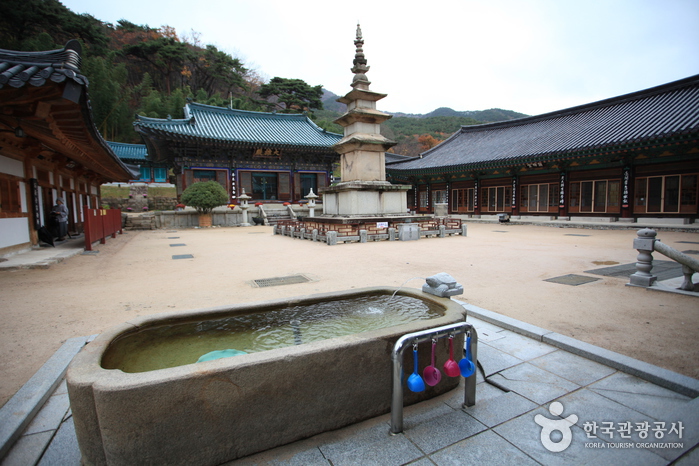
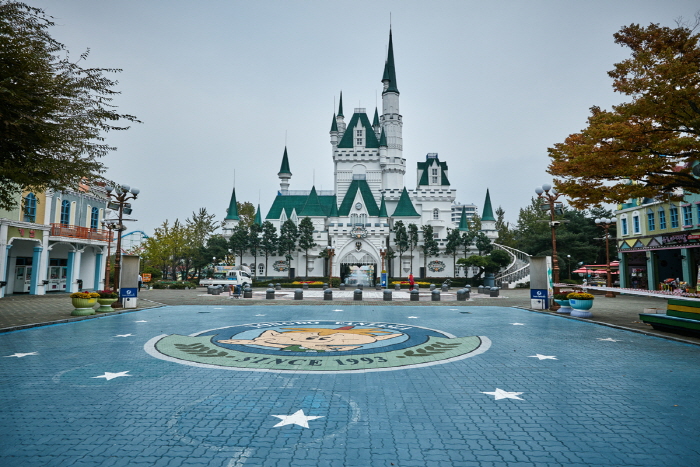
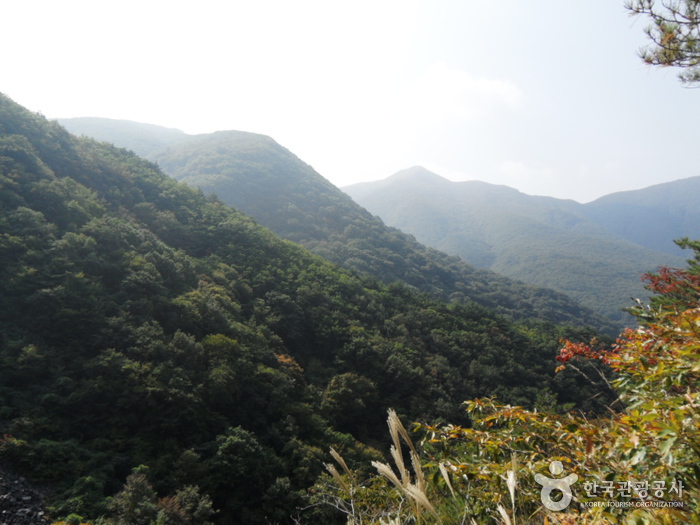
![Tongdosa Temple [UNESCO World Heritage] (통도사[유네스코세계문화유산])](http://tong.visitkorea.or.kr/cms/resource/83/1229083_image2_1.jpg)
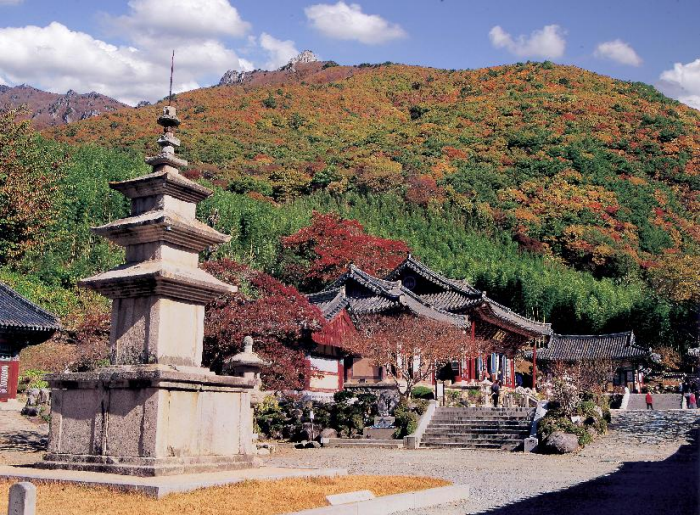
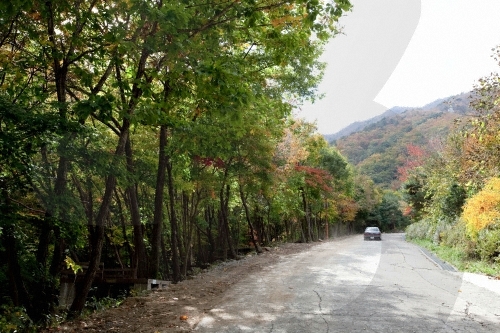
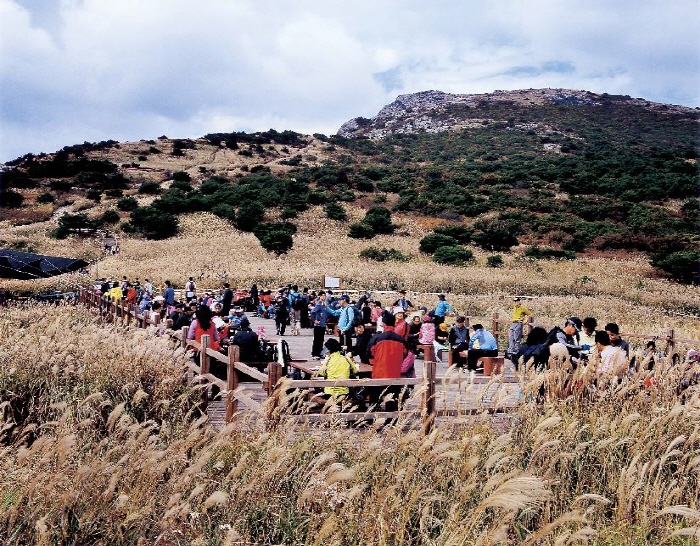
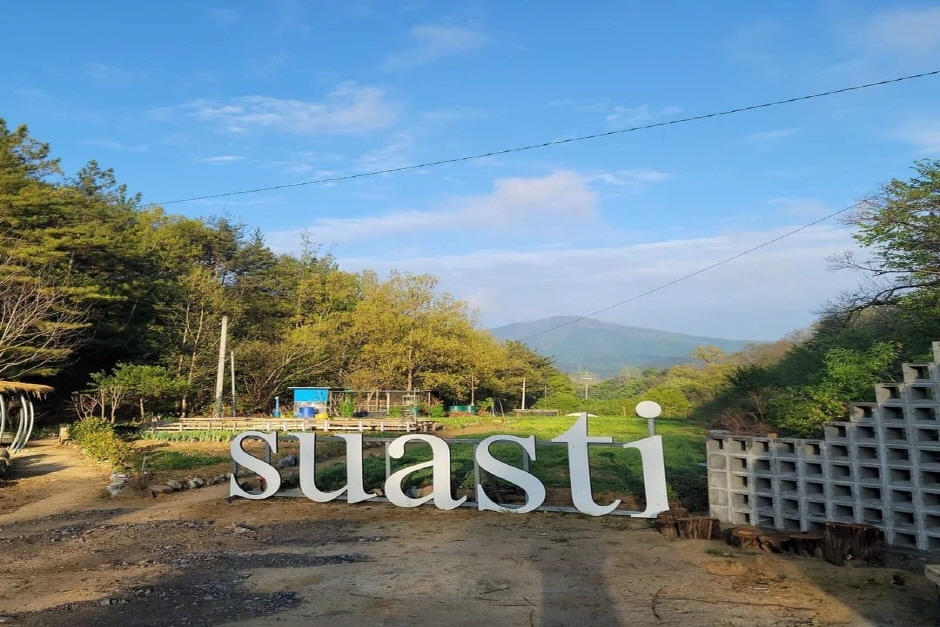
![Eoreumgol Hanok Pension [Korea Quality] / 얼음골 한옥펜션&캠핑장 [한국관광 품질인증]](http://tong.visitkorea.or.kr/cms/resource/89/1878489_image2_1.jpg)
 English
English
 한국어
한국어 日本語
日本語 中文(简体)
中文(简体) Deutsch
Deutsch Français
Français Español
Español Русский
Русский